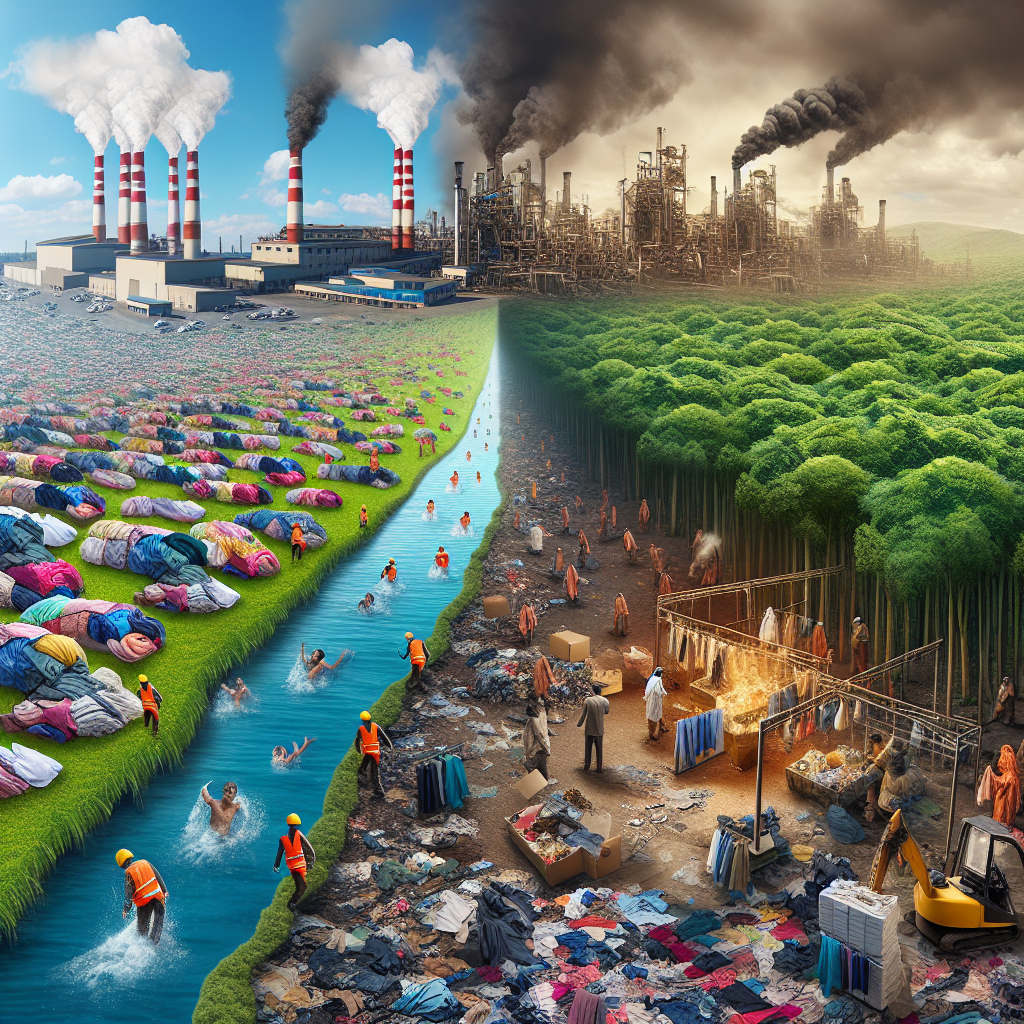The True Cost of Fast Fashion: Environmental and Social Impacts
In the ever-evolving world of fashion, the allure of the latest trends at affordable prices seems too good to resist. This relentless demand for new, inexpensive clothing has given rise to the fast fashion industry, a sector characterized by rapid production to get the newest styles on the market as quickly as possible. However, beneath the surface of this seemingly benign convenience lies a web of environmental and social consequences that pose significant challenges to sustainable development and ethical practices.
Environmental Impacts
Resource Depletion: Fast fashion relies heavily on the extraction of raw materials, leading to the depletion of natural resources. The production of cotton, one of the most commonly used fibers in clothing, is particularly water-intensive. It is estimated that it takes about 2,700 liters of water to produce the cotton needed for a single T-shirt, a figure that starkly highlights the industry’s unsustainable consumption of water resources.
Pollution: The industry is also a major source of pollution. Dyeing and treating textiles contribute significantly to water pollution, with untreated toxic wastewaters from textile factories being discharged directly into rivers. This not only harms aquatic life but also affects the millions of people who rely on these water sources for drinking and sanitation. Additionally, fast fashion is a substantial contributor to air pollution, with the textile industry accounting for a considerable percentage of the world’s carbon emissions.
Waste: The transient nature of fast fashion means that clothes are often discarded after only a few wears. This throwaway culture has led to a dramatic increase in textile waste. In many countries, the majority of discarded garments end up in landfills or are incinerated, contributing to pollution and the depletion of non-renewable resources.
Social Impacts
Labor Exploitation: Fast fashion’s cost-cutting and speed-oriented business model often come at the expense of garment workers’ rights and working conditions. Many workers in the supply chain are subjected to unsafe working environments, long hours, and wages that do not meet basic living needs. The tragic collapse of the Rana Plaza factory in Bangladesh in 2013, which claimed over 1,100 lives, brought global attention to the dire working conditions faced by many in the garment industry.
Impact on Local Communities: The environmental degradation associated with fast fashion also has direct social consequences. Pollution and resource depletion affect the health and livelihoods of communities around the globe, particularly those in proximity to manufacturing hubs. Water scarcity, caused in part by the enormous water consumption of the textile industry, poses serious challenges to agriculture and access to clean drinking water, further exacerbating social inequalities.
Cultural Implications: The global reach of fast fashion can also have cultural impacts, as traditional textiles and production methods are overshadowed by mass-produced clothing. This not only erodes cultural heritage but can also affect local economies dependent on traditional crafts.
Mitigating the Impact
Addressing the impacts of fast fashion requires concerted efforts from consumers, manufacturers, and policymakers. Sustainable fashion practices, such as choosing eco-friendly materials, supporting ethical brands, and embracing second-hand and vintage clothing, can significantly reduce the environmental and social footprint of our wardrobes. Additionally, advocating for stronger labor protections and environmental regulations in the fashion industry is crucial to ensuring a more sustainable and equitable fashion future.
FAQs
Q: What is fast fashion?
A: Fast fashion is a term used to describe the rapid production of high volumes of clothing, replicating the latest fashion trends at low cost. This business model prioritizes speed and affordability over quality and sustainability.
Q: How does fast fashion affect the environment?
A: Fast fashion impacts the environment through resource depletion, pollution, and waste. It consumes vast amounts of water, contributes to air and water pollution through the use of toxic chemicals, and generates significant textile waste.
Q: How can consumers reduce their impact?
A: Consumers can reduce their impact by purchasing less and choosing more sustainable options, such as buying from ethical brands, opting for high-quality and durable garments, and supporting second-hand and recycling initiatives.
Q: Are there ethical alternatives to fast fashion?
A: Yes, there are many ethical alternatives to fast fashion. These include brands that prioritize sustainable production practices, use eco-friendly materials, and ensure fair working conditions for their workers. Supporting local artisans and embracing traditional textiles can also be a more ethical choice.
Q: Can the fashion industry become sustainable?
A: While achieving full sustainability in the fashion industry is challenging, significant progress can be made through innovation in materials and production processes, stricter environmental and labor regulations, and a shift in consumer behavior towards more sustainable and ethical practices.
The true cost of fast fashion is not just the price tag on the garment; it encompasses the environmental degradation, the exploitation of workers, and the erosion of cultural heritage. By acknowledging these impacts and taking action to mitigate them, both consumers and the industry can work towards a more sustainable and ethical fashion future.

